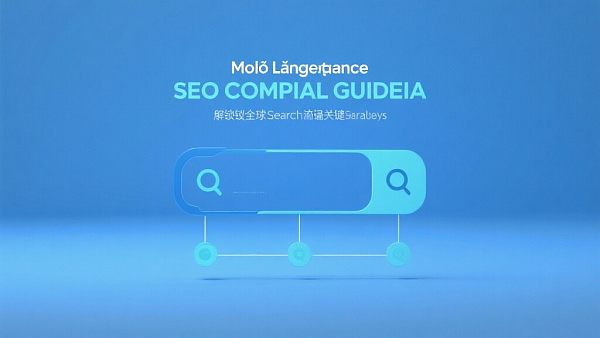Easy Camp Cloud Intelligent Website Construction and Marketing System Platform!
Why Is Multilingual SEO So Important?
Expand Target User Reach: Websites supporting multiple languages can break through geographical limitations and reach potential customers worldwide.
Improve Search Engine Rankings: Optimizing for different languages and regions helps websites gain better exposure in search results across target markets.
Enhance User Experience and Conversion Rates: Users prefer browsing and purchasing in their native language. Localized content significantly boosts trust and conversion rates. Surveys show that 40% of consumers won't buy products from brands that don't use their language.
Core Challenges of Multilingual SEO
When implementing multilingual SEO, enterprises often face several major challenges: ensuring content is localized rather than simply translated, avoiding being flagged by search engines for duplicate content due to similarities, and providing a smooth and relevant user experience for users in different languages and regions.
How to Effectively Implement Multilingual SEO?

1. In-Depth Keyword Research and Localization
Successful multilingual SEO begins with precise keyword research. This isn't just about translating keywords but also understanding the search habits, cultural differences, and linguistic characteristics of target markets.
Explore Regional Search Habits: The same product may have completely different names in different countries. For example, "sneakers" in English might be searched as "zapatillas" in Spain and "tenis" in Mexico.
Utilize Professional Tools: Use tools like Google Keyword Planner, SEMrush, or Ahrefs to identify high-search-volume, low-competition keywords in various languages.
Focus on Long-Tail Keywords: Although they have lower search volumes, long-tail keywords usually have clearer intent and higher conversion rates.
2. Content Localization and Cultural Adaptation
Content localization is the core of multilingual SEO, requiring adaptation beyond literal translation to account for cultural nuances.

Avoid Direct Translation, Emphasize Transcreation: Adjust content based on the tone, habits, and cultural preferences of target markets while preserving the original intent and emotion.
Pay Attention to Details: Adjust currency units, date formats, measurement units (e.g., converting inches to centimeters), and legal compliance information (e.g., CE certification, FCC certification).
Avoid Cultural Taboos: Colors, numbers, and images may carry different meanings in different cultures, requiring careful consideration to prevent misunderstandings.
3. Technical SEO Optimization: Solid Infrastructure
Technical optimization ensures search engines can efficiently crawl and index all language versions of your website.

Use Correct URL Structures: Google recommends using subdirectory structures (e.g., example.com/es/) rather than subdomains (e.g., es.example.com) as subdirectories better inherit the main domain's authority.
Properly Deploy hreflang Tags: This HTML tag is crucial as it informs search engines which language and region a page targets, helping avoid duplicate content issues and ensuring users see the correct page version.
Set Language Attributes: Use the lang attribute in the HTML tag (e.g., ) to help browsers and search engines identify the page language.
Optimize Website Performance: Use CDNs (Content Delivery Networks), compress images, and ensure mobile-friendliness to enhance global users' access speed and experience.
4. Localized Link Building and Authority Enhancement
Acquiring high-quality backlinks from authoritative websites in target markets is an effective way to boost your site's authority and rankings in local search engines.
Collaborate with Local Resources: Establish connections with industry associations, influential blogs, news media, or key opinion leaders in target regions to gain links.
Create Linkable Assets: Produce high-quality, market-specific localized content (e.g., research reports, case studies) to naturally attract citations and links from other sites.
5. Continuous Tracking, Analysis, and Optimization
Multilingual SEO is an ongoing process that requires regular performance monitoring and adjustments based on data.
Leverage Analytical Tools: Use Google Analytics and Google Search Console to track traffic, user behavior, keyword rankings, and indexing coverage for each language version.
Conduct A/B Testing: Test different content variations or landing pages across language versions to identify the best-performing options.
The Key to Embracing Global Markets

Multilingual SEO is a complex challenge but also the key for businesses to unlock global market opportunities. By developing meticulous strategies, conducting in-depth keyword research and content localization, solidifying technical foundations, and continuously tracking optimizations, your website can attract target users worldwide and achieve true global growth.
Start planning your multilingual SEO strategy now and let your brand shine in every corner of the world.





